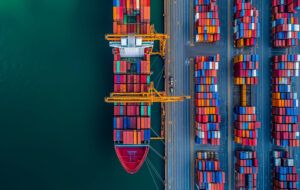
Blog
7 Ways the Government Can Ease Supply Chain Pressure During Coronavirus
The coronavirus has hit the U.S. supply chain hard. No longer invisible to consumers, the visual evidence of the supply chain’s importance is manifesting in the form of empty shelves and out of stock notices online.
The CPG industry is ramping up production on critical products and some retailers are responding by limiting quantities for high-demand items, but there is an important role for government to play in working toward a frictionless supply chain. There’s also support for the government playing that role. The vast majority (89%) of Americans think it should do more to plan for and mitigate against supply chain disruptions of critical consumer goods.
Consumer Brands identified seven ways the government can ease supply chain pressure during the coronavirus situation and in any future emergencies we may face as a country.
- Help keep goods moving. A temporary lift of the “Hours of Service” rules will alleviate coronavirus’ impact on trucking shortages and keep goods moving. Typically reserved for emergency declarations for drivers who are directly providing assistance during a disaster, opening it up more broadly in this case, because of the nature of the disease, the response has to be more comprehensive.Another option to keep goods moving would be to temporarily authorize a modified Hours of Service rule, using the “adverse driving condition” clause to justify temporarily raising the maximum driving time from 11 to 13 hours.
- Create a task force of Customs and Border Protection (CBP), the Department of Homeland Security, port authorities and other stakeholders. This group can come together to make recommendations about how to most efficiently clear containers at ports and to outline priority given to them. This recommendation is in anticipation of a shipping container backlog and eventual convergence of shipping containers at U.S. ports all at the same time.
- Develop priority list and get data further in advance at ports. By requiring CBP to develop a priority list for clearance at ports as well as require shipping companies to transmit container data 36 to 48 hours in advance, as opposed to the current 24-hour window, we can expedite the movement of critical products.
- Coordinate relevant departments and agencies to get businesses accurate, real-time information. The Center for Disease Control, in coordination with the Department of Commerce, Food and Drug Administration, U.S. Department of Agriculture and other appropriate agencies could collaborate to produce a report with accurate, real-time information that can help businesses make better informed decisions during emergencies and pandemics—a time when reliable, up-to-the-minute information is most needed and inaccurate data and reporting can compromise good decision-making.
- Create a White House Office of Supply Chain. The Office of Supply Chain would coordinate across multiple agencies that impact supply chains and make comprehensive, holistic policy recommendations. The current, fragmented approach creates unnecessary barriers to cooperation; this office could coordinate and collaborate in a way that would remove friction points in the supply chain—something that would help American consumers, crisis or not.
- Commit to studying the effect of pandemics on the supply chain so we’re not playing catch-up. Direct National Academy of Sciences to study supply chain resiliency in a global pandemic, the impact of pandemics to the global supply chain, and the resulting affects that further undermine human health, sustainability, and global economic activity, and to provide rapid response recommendations to minimize those impacts. This objective can be accomplished with existing funds and does not need Congressional approval or appropriations.
- Ensure continued access to critical products in future funding. In future supplemental or appropriations bills, Congress should provide funding to mitigate and manage medical, nutritional, cleaning, and sterilization product shortages and disrupted supply chains.
These seven recommendations represent only a handful of the ways government can help ease supply chain pressure during situations like coronavirus or natural disasters. Many of them require little to no funding and can go a long way toward ensuring Americans have access to essential, high-demand products that the CPG industry makes and is working overtime to provide.
From providing original research, industry guidance and cutting-edge insights, to advocating on Capitol Hill and shaping policy that will have an impact for years to come, we are committed to delivering for our industry during this crisis. Stay informed.
Published on March 8, 2020




